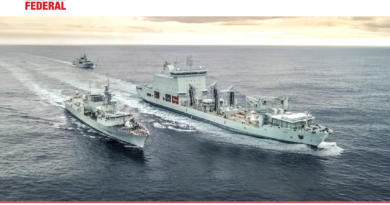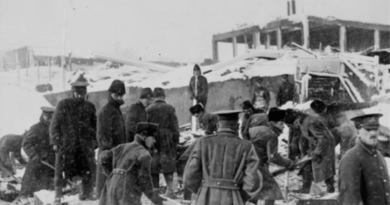What should an enlarged Canadian navy look like?
by Ken Hansen
There are indications that more funding will be coming into the defence budget to make the military larger and more capable. Here are the recommendations I made to the Standing Committee on Defence in September 2016 regarding what the Royal Canadian Navy needs in a short-medium-long term framework (in quotation marks with some elaboration in the intervening paras). Sadly, they are all still relevant today.
There are three major areas of weakness that affect naval readiness in Canada. They are the local or tactical level, the organizational or operational level, and the institutional or strategic level.
“At the practical level, the navy is limited by all manner of shortages of people, spare parts and supplies. Young people are waiting interminably for training, spare parts are being emergency transferred from ship to ship, and operations have to be carefully planned to avoid logistical exhaustion. The margins for naval operations are simply too fine. In the event of the unexpected, no contingency reserves exist to make up for shortages in these areas and many others.”
To get the maximum use out of the fleet we have, these shortages must be addressed first. The fleet is governed not by its size but by a myriad of smaller issues that can render a large percentage of the fleet unavailable. The most critical at the moment is people. Skilled and experienced sailors are leaving the navy because they do not believe the navy’s corporate mantra of “Mission first; people always.” Shortages in some trades are more than 25%. This is a crisis and needs emergency attention – anything less will not do.
“At the organizational level, the navy needs to diversify its structure and functions. The first sign of this is actually on the way in the form of the Arctic and Offshore Patrol Vessel. I predict that this utilitarian and flexible ship will become the naval equivalent of a ‘pickup truck.’ It has reserve cargo capacity and utility spaces that will make it valuable in a wide array of safety, security and sovereignty tasks. If the Royal Canadian Navy (RCN) already had such a ship in service (in 2016), it would be off Haiti by now loaded with disaster relief supplies and using its landing craft in areas cut off by the storm. A major step toward improved readiness would be to make Humanitarian Assistance and Disaster Relief official missions of the Canadian navy.”
A fleet mix of surface, subsurface and air platforms is required for the RCN to be truly relevant. Too much concentration on combat capabilities has left the navy very weak logistically. The lessons from Ukraine show clearly that logistics enable operations and that deficiencies can be crippling. While the fleet needs to double in size, the logistical component should at least be quadrupled.
“At the institutional level, the navy is simply too small for a country of our size. In a 2010 study, my master’s student, Matthew Gillis, conducted a global survey of naval and coast guard forces and compared the RCN to other navies (by population, area of responsibility and gross domestic product). By any standard of measure, the Canadian navy (especially in manpower terms) is at least half of the strength that it should be. This diminished stature in a unified forces structure leaves the navy vulnerable to the creation of unified doctrines that do not reflect naval concepts and practices. Put simply, the tyranny of the majority dictates a common approach to all problems in all environmental circumstances. The naval view is ignored.”
As the country with the longest coastline in the world and an enormous offshore territory, Canada needs a continuous strategic commitment that spans governments’ mandates to keep a credible maritime security force in a place of high priority in spending plans. The navy, coast guard and RCMP are collectively responsible for safety, security and sovereignty of Canadian waters plus those of allied and aligned countries. Readiness is needed for responsiveness to problems and sustained endurance is needed for effective actions. A teamwork approach between the navy, coastguard and federal police seems to be the only way to ensure the means to produce effective responsiveness. This is not a competition for resources; any increase to one will benefit the other two so long as a truly inter-service commitment to safeguarding, protecting and defending Canadian maritime interests can be instilled into the culture of our maritime forces.
Ken Hansen is an independent defence analyst and owner of Hansen Maritime Horizons. He served for ten years at Canadian Forces College as the Chair of the Maritime Component Program and as Senior Staff Officer Joint and Combined Warfare. He is an opinion columnist for MacLean’s magazine and for the Globe & Mail. This work is the sole opinion of the author and does not necessarily represent the views of the Canadian Department of National Defence, the Canadian Armed Forces, the Royal Canadian Mounted Police or the Royal United Services Institute of Nova Scotia. The author may be contacted by email at: RUSI(NS).



